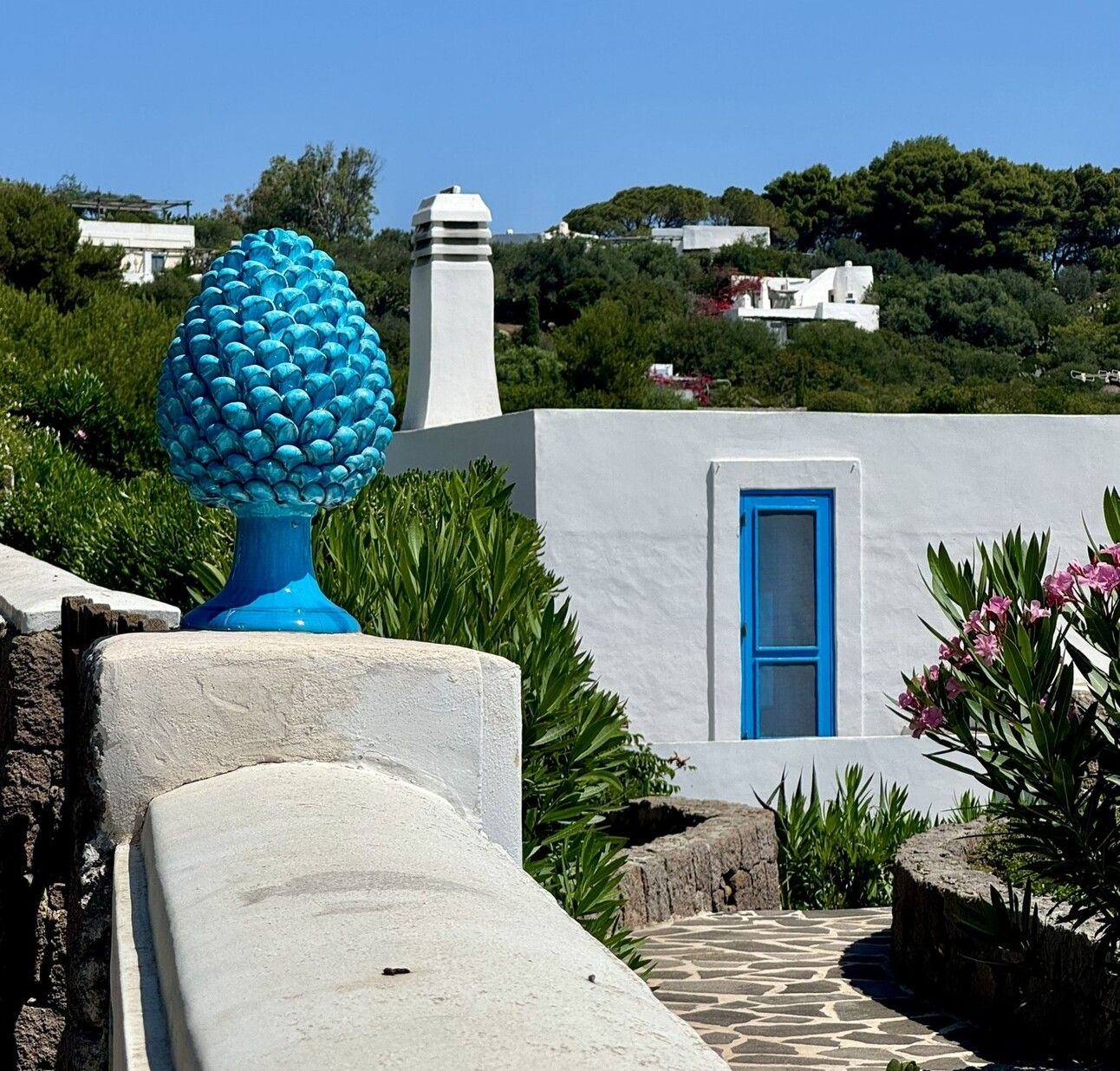
Charming Castelmola, perched high above Taormina
How I’ve missed Sicily this year
However, fast forward to October and we’ll be crossing the Strait of Messina for glorious, sun-kissed days on Italy’s biggest region and the largest island in the Mediterranean. So much to love about this island that is a fierce melting pot of cultures, traditions and food, an island that has been invaded and conquered by so many over the centuries to create a layered history like no other.
There are several cultural quirks that arouse curiosity and prompt questions, so no better time than before a tour to dive into the history and legends that make up the complex fabric of Sicily.

Sicilian Moor heads
Teste de Moro
It’s impossible not to notice the teste de moro - Sicilian Moor heads. These head shaped ceramic vases appear throughout Sicily with their colourful glazed faces and piercing gazes. To understand their history is to know the relationship between the Moors and the island. The Sicilian capital of Palermo is regarded as the most conquered city in the world. Arriving from present day Tunisia, invaders landed on the shores of Sicily around 827 AD and ruled for the next 250 years. These conquerors were referred to as “Moors” which was a term used by Europeans to refer to Arabs from North Africa, as well as those from other parts of Africa and the Middle East.
Legend tells us that the Moorish heads became popular in the 11th century when the Moors were at the height of their domination. A beautiful young Sicilian woman is on her balcony watering her plants when she looks down to see a handsome Moro merchant gazing up at her. It is love at first sight and the start of a passionate love affair, like all good love stories. However, when it’s time for the merchant to return to East Africa, the young woman finds out that he is returning to his wife and children. Consumed with jealousy, she cuts off his head in his sleep and, wanting to possess him forever, uses it as a pot in her garden to grow basil in. Watering the plant daily with her tears, the herb grows lush and vibrant, soon attracting the attention of her neighbours. They, too, want healthy basil, so create ceramic vases with the same features as the Moor’s head, hence a new tradition is born. And the lesson here? Never betray a woman, particularly a Sicilian one!

The reason you’ll see hand painted heads in pairs is due to another version of the legend. A Sicilian girl with noble origins and a young Moor fall deeply in love, but their respective families forbid the romance and have the young couple beheaded. Legends can be gruesome.
A symbol of fertility
On a lighter note, ceramic pinecones are also prevalent throughout Sicily. The art of creating pinecones has been passed down through generations, and many artisans today still make them using traditional methods and materials for glaze, paint and clay. The pinecones originate from Sicilian folklore as an ancient symbol of fertility believed to bring good fortune and abundance to all who enter the home. Therefore, they are a customary housewarming gift, especially for newlyweds. For centuries, pinecones were used for medicinal purposes because it was a common belief that pulverizing pieces of the cone could cure illnesses such as fever and headaches.

What does the symbol on the Sicilian flag mean?
A strange looking figure with three legs and a head attached to it is the symbol of Sicily seen on the official flag. It was adopted by the island many centuries ago when Sicily was dominated by the Greeks. The symbol is known as Trinacria, a Greek word that means ‘ three pointed’; it depicts the shape of the island which resembles a triangle. Trinacria was the earliest known name of the island of Sicily.

The head refers to Greek mythology, said to be Medusa, a monstrous creature with a head of snakes, a beautiful woman seducing men who, upon looking at her, were turned into stone. In the past, tradition called for a trinacria to be placed behind the home’s door as a symbol of protection for the house. The Medusa would turn to stone anyone who tried to hurt the family living in the house. The three legs represent the three capes of Sicily: Peloro (north-east), Passero (south) and Lilibeo (west), which form the three points of a triangle.
For more on Sicily →
Ci vediamo la prossima settimana.
Deb
